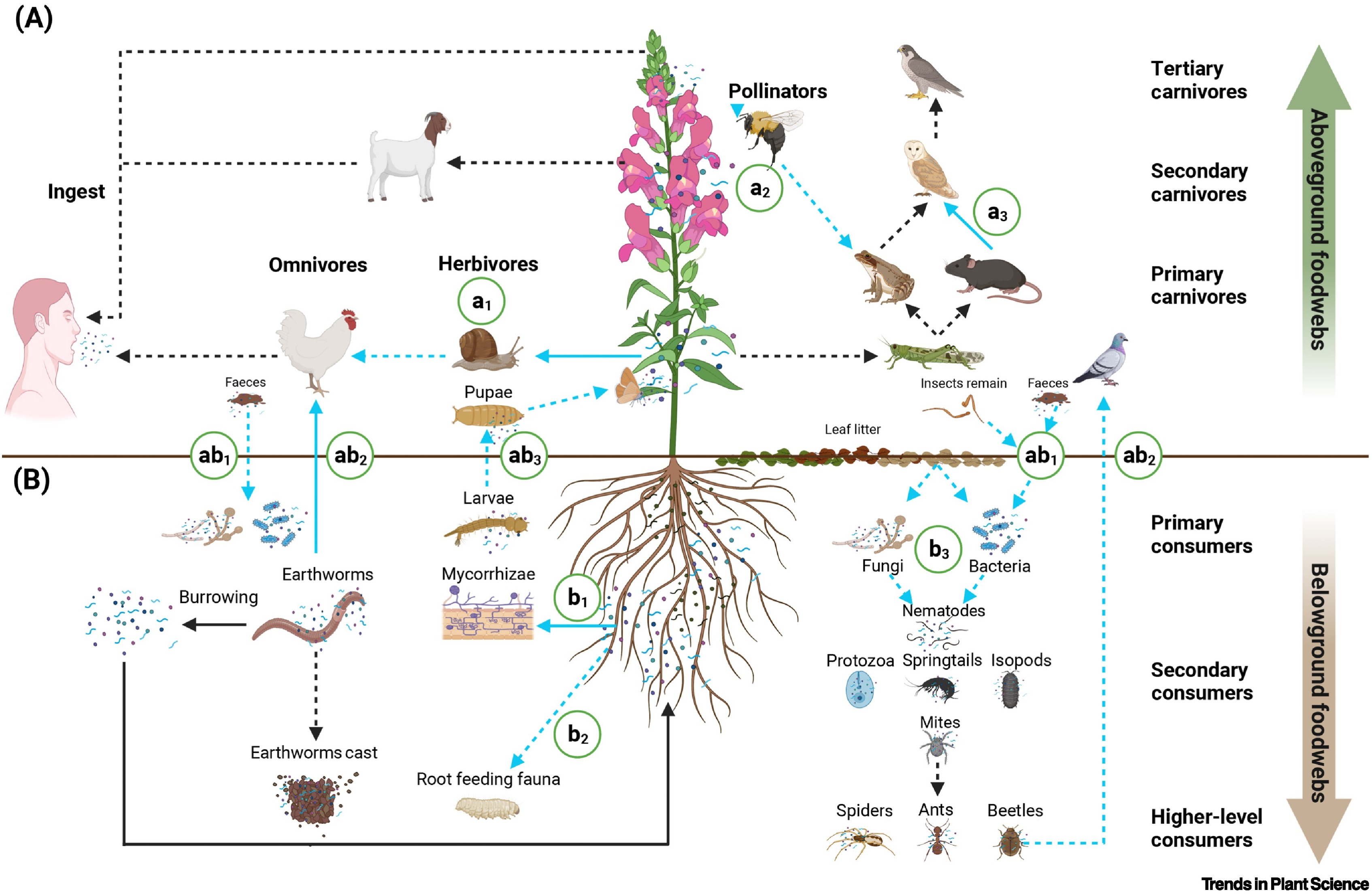Micro- and nanoplastics (MNPs), plastic particles and fibers with sizes ranging from nanometers (≥ 1 nm) to micrometers (≤ 5 mm), have become an emerging environmental pollutant and are widely distributed across various ecosystems worldwide. These tiny plastic particles not only pose a threat to marine ecosystems, but also present new challenges to terrestrial ecosystems. However, research on terrestrial MNPs lagged behind marine studies.
Researchers from Xishuangbanna Tropical Botanical Garden (XTBG) and their collaborators tried to fill the knowledge gap of the uncertainty about the effects of micro/nano plastics on multi-trophic biological interactions and ecosystem functions, especially on plants and aboveground-underground (AG-BG) food webs.They made a comprehensive overview of MNPs ingestion, bioaccumulation, and their ecotocicological endpoints on plants and the associated key AG-BG biota across trophic level.
Related results have been published in Trends in Plant Science.
They found that micro/nano plastics are widely present in terrestrial ecosystems. MNPs bioaccumulate across plants and the associated AG-BG biota, causing ecotoxicological effects at multiple trophic levels. Once absorbed by plants, MNPs interact with herbivores, pollinators, and mycorrhiza. MNPs transfer across trophic levels through multiple potential pathways, and may affect biodiversity patterns, ecosystem processes, and ecosystem multifunctionality.
The researchers proposed key trophic and non-trophic MNPs transfer pathway within and between the AG-BG food webs, including leaves-herbivores, flowers-pollinators, prey-predators, roots - arbuscular mycorrhiza fungi, roots - herbivores, leaf litter - decomposers, AG litter - BG decomposers, BG prey - AG predators, BG larvae - AG adults.
The researchers further proposed that urgent and comprehensive studies on terrestrial ecosystems are needed to fully assess the ecological impacts of MNPs and develop strategies for mitigating their effects on plants and their interconnected food webs.
“Current research on the trophic transfer of micro/nano plastics and their long-term impacts on ecosystem multifunctionality is still very weak. Therefore, in the future, we need to comprehensively assess the ecological impacts of micro/nano plastics and develop effective strategies to mitigate their adverse effects on plants and aboveground-belowground food webs,” said YANG Jie of XTBG.

Schematic representation of the transport of micro/nanoplastics (MNPs) in aboveground (AG) and belowground (BG) food webs. (Image by XU Guorui)
Contact
YANG Jie Ph.D Principal Investigator
Key Laboratory of Tropical Forest Ecology, Xishuangbanna Tropical Botanical Garden, Chinese Academy of Sciences, Mengla, Yunnan 666303, China
E-mail: yangjie@xtbg.org.cn
Published: 27 December 2024

